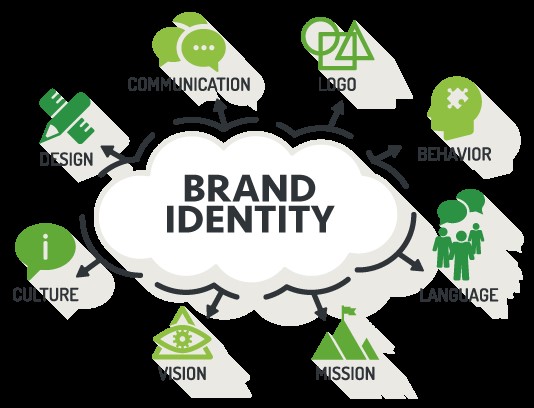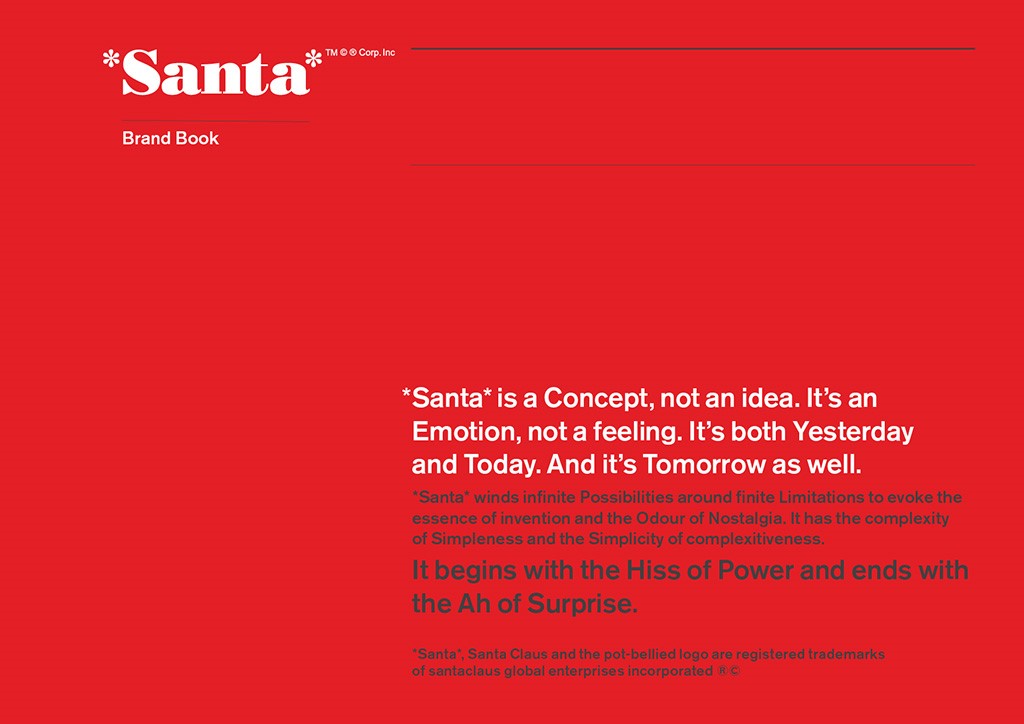Here is a riddle straight from the riddled. I am a trustworthy, comfortable, relaxed & trendy brand identity.
Who am I?
Difficult right? Because the clues are generic. Here is a piece of vital evidence.
I am related to sports, and I have an athletic image.
Still no clue who I am?
I am the epitome of motion and speed. I am sure most of you have guessed it by now. For those who haven’t, don’t be hard on yourself. I am Nike.
The first clues that I gave were too generic to venture a guess. However, when I revealed that the sports brand touted an athletic image, you guessed in a jiffy.
It is because akin to humans, brands have certain identity traits that make it easier for customers to relate to the brand.
What is Brand Identity?
A common misconception is that the concept of brand identity is purely for graphic designers. It starts with choosing a brand name and hiring a graphic designer, who will flip a few colors in any old logo, and you have your brand identity. No.
Let’s clear that misconception, shall we?
Brand identity is actually for marketers and business owners. It is an image that people have of your brand when they read, listen to, or see anything that conjures up images of your brand in their minds.
To answer what a brand identity is in layman’s terms, a brand identity is how brands communicate with the world in a way that differentiates them from competitors. Create a brand experience that people will never forget, and they will never turn to your competitors.
Some brands like Apple, LEGO, Amazon, and Warby Parker have elevated their brand identity to the next level. These brands have leveraged stellar customer service to engage with customers and leave a solid impression.
On the other side of the universe, some weak brands fail to impinge their image on the minds of their consumers. Some of these brands started out okay, but right in the middle, they lost their touch and were unable to communicate with their customers in a way that portrays the true essence of the brand.
In this article, we will help you answer the most daunting question. How to create a brand identity that will bring your competition to its knees? Well, not evaporate in thin air, because only Thanos could do that and he’s too dead for it (no spoilers intended). Let’s say that you will learn how to create a brand identity in a way that is easy to understand and simple to implement.
Step 1: Begin with a complete Brand Strategy
When you devise your branding strategy, it is essential to begin with a detailed plan on how to achieve success. Where does your brand stand at the moment and where do you want to take it?
When you figure out where you want to go, then what you’re trying to achieve becomes clearer.
Related read: How to market your brand to the masses?
To set your brand up for success, it is vital to understand your core brand values, create a brand voice, and design everything that aligns with those elements.
If you don’t have a brand strategy in place, fret not; we, at Branex can guide you with it. Contact us, and we will help you gear up for grand success.
Step 2: The Core Elements of Brand Identity
What is the first thing that pops up in your mind when you see the image below:

You don’t have to be a marketing guru to appreciate Apple’s prudently and intricately crafted marketing strategy. One-Bite Apple needs no introduction. Whenever you see this logo, you can relate it to Apple. An Apple product is all about trust, innovation, and standalone class.
When developing a brand strategy, it is essential to use a solid visual language which can be integrated everywhere from your website to brochure and mobile app. Although there are tons of brand identifiers out there if we talk about some major ones, here is the list:
The logo, colors, typography, images, video and motion, website design, and data visualization. That being said, just because you are using these elements won’t guarantee your success. A rock-solid brand identity is something that can be related to the internal team, content creators, and everyone who is interacting with the brand.
Here are some fundamental qualities that you can use to impinge your brand upon the minds of customers.
- Distinct: To gain some advantage, you must create something unique that separates you from your competitors. Something that no one else is providing.
- Memorable: A brand is more than a logo, brochure, or website. You must integrate one single message across all your marketing mediums, to maintain integrity and reach out to all your consumers.
- Unified: Each element in your element should complement the brand identity.
- Clear as a bell: The whole brand identity must be transparent and clear. If the strategies are explained in an easy-to-understand manner, it will be effortless for the designers to apply them across the design.
- If even one of these elements goes missing from your toolkit, it will be cumbersome for the brand team to do their job.
Step 3: Divide everything into chunks
You must approach every phase from a philosophical & highly critical standpoint – analyze, poke, and prod until you get to the core of your brand. Once you have that knowledge, it will be easier for you to translate that knowledge into a visual form.

When you are done with the mission and vision of the company, you move towards designing a logo for the brand. For this, you must first understand the company culture. The communication within the company must follow the core values portrayed.
The next step is to create a brand persona. A face that interacts with the entire world. A common misconception is that people consider brand identity as the fact that the brand presents to the world.
In reality, it is about understanding the psychology of customers so that better design choices can be made. To understand their needs and wants, and the values that the brand offers.
Collect the demographic and psychographic information to give you insights into what drives some people to buy from you and others to steer clear of your brand.

Beyond your primary audience, you must also keep an eye on secondary groups, such as employees and other brands. It is not just about How to create a Brand Identity, it is more about how people perceive your brand as a whole.
Identify Your Competition. Moreover, see how your brand can differentiate from your competitors.
The best way is to understand and analyze how your competitors present themselves in terms of content, visual elements, and marketing.
For instance, when Twitch launched in the year 2011, its competitors were using bold colors like Reds and Greens, and they came up with all-purple branding. The color became an instant hit and in the year 2014, they sold for $1 billion.
If you are looking to create a brand identity, it is essential to face reality and see your brand as it is. Does your brand align with the core values and goals of the company?
Step 4: Build Your Identity
I guess, by now, you have all the necessary information in your arsenal on How to Create a Brand Identity that will stick with people.
Now is the time to sit back with your team and brainstorm some words. These words will represent the image of your brand. The goal here is to breathe life into your brand.
Here is an example of Nescafe.

It’s important to remember that each word must drive a specific emotional response. Pick words that will trigger users to build a visual image of your brand with the meaning of that word.
The core of your brand identity is the logo. For this, you are allowed to go old school and use a pencil or a sketch to ignite the creative genius within you.

There will be iterations, give it time before you finalize the logo. Once you think you are done, ask yourself if the design is successful at delivering your core message.
Colors
Positive imagery can influence the buying decisions of your potential customers.
Every color indicates a specific personality trait.

See how each color is associated with a word and that word is linked to the brands that you already know.
Every phase, even typography can reveal a lot about a brand.
You can persuade customers with simple fonts.
Limit the number of fonts to 2-3. Nothing more. Each font must represent your brand persona.
Here is a fantastic video that can help you choose the right font for your logo:
The typography must be selected with care. This is your opportunity to showcase a strong brand presence to your potential customers.
Step 5: Developing a Brand Guideline
The most heartbreaking thing when you are on your way to creating a brand identity is to develop a powerful brand identity but use it incorrectly. This is where the brand guideline comes to your rescue to circumvent confusion.
If you don’t know where to begin, here are some tips on brand guidelines which will give you a head-start.

Remember to lay down a brand guideline for each element of the brand. Here, more information will help. Include as much information as you can.
Once you are done with the guideline, distribute it to your team. Make it available for newcomers to check the instructions and learn more about every element of the brand.
Work hard to maintain a strong Brand Identity
It might take a while to create a strong brand identity. However, it is okay. The critical thing to remember here is that after you’ve created a brand identity, everyone in your company must be on the same page. I hope that you’ve got the answer to a profound dilemma!
Moreover, if you have no idea what to do with all that you have read above, fret not; we are here to help you out. Let’s chat about creating your brand identity. We are willing to take the strain off your shoulders.




